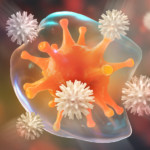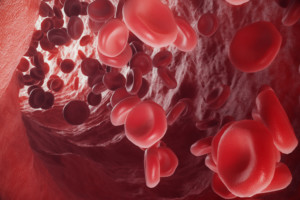Contents
What is carnosine?
The body naturally produces carnosine. It is a dipeptide which the body creates from the amino acids histidine and beta-alanine. Carnosine is present in high concentrations in areas of the body which require a lot of energy. These include the muscles, brain, liver, kidneys, and heart.
This amino acid has a number of antioxidant properties. Consequently it has been the subject of a lot of research. Specifically, scientists have been intrigued to ascertain if this non-essential amino acid can help to reverse the aging process1. Other areas of research focus on the effects of carnosine in disease treatment and exercise productivity.
Studies have found that as the body ages, concentrations of carnosine begin to decline2, 3, 4. However, the body’s requirement for this amino acid does not diminish. This is where dietary sources of l-carnosine become increasingly important to keep the body functioning at an optimal level.
Health benefits
Ageing
One of the major roles of l-carnosine is to help the body meet the metabolic demands of energy production and allocation. In young bodies this amino acid is present in high concentrations to support high energy-demanding tissues.
However as the body ages, carnosine concentrations decline for a couple of reasons. Firstly, the body makes less of this compound. Secondly, carnosine becomes more susceptible to destruction in older bodies.
Studies have shown that people experiencing unnaturally accelerated ageing due to conditions such as metabolic syndrome and diabetes have a much lower production rate of l-carnosine and this amino acid is destroyed at a faster rate5. Therefore scientists have been trying to determine if increasing carnosine concentrations can help to slow down or reverse the aging process.
There have been many studies focusing on the anti-aging properties of this amino acid. Scientists have found that carnosine can reduce the aging of human cells in laboratory culture dishes 6, 7. This amino acid has also been found to extend the lifespan of rotifers, fruit flies, and mice8, 9, 10, 11, 12.
Anti-ageing effects
This amino acid is not just any ordinary antioxidant molecule. Although it is not the most powerful antioxidant, it does target six molecular aging mechanisms and can increase longevity. Areas where carnosine is an effective anti-aging agent include:
- Oxidation – Stress on the cells and tissues cased by oxidation is one of the leading causes of aging. Carnosine helps to minimise this by scavenging free radicals, reducing DNA damage13.
- Glycation – This is the formation of glucose compounds containing various enzymes and proteins that cause aging. These glycated molecules induce oxidative stress and enhance inflammatory responses that accelerate the aging process. 14, 15.
- Cross-linking – The combination of oxidation and glycation causes ineffective cross-linked proteins. These abnormalities are dealt with naturally through structures known as proteasomes. However as the body ages, cross-linked proteins accumulate as proteasomal degradation declines. Carnosine can help to eliminate cross-linked proteins. 16, 17.
- Mitochondrial dysfunction – As the body becomes increasingly exposed to oxidative stress, mitochondrial dysfunction increases and this speeds up the aging process. However, studies show that carnosine can help to alleviate these problems18, 19.
- Excess metals – Excess metals in the body are toxic. Scientists have found a link between these and diseases such as Parkinson’s and Alzheimer’s. Carnosine will bind to copper, iron, and zinc ions to help ride the body of these excess metals20.
- Telomere shortening – Telomeres are repeated DNA sequences located at the ends of chromosomes. They act like a ‘molecular clock’ and become shorter with every cycle of cell reproduction. The cells die when telomeres become too short and this increases the aging process. Carnosine slows down the rate of shortening21.
Exercise
Carnosine itself is not often taken as a performance enhancing supplement. However, beta- alanine supplements are popular among body builders and athletes.
This is because this amino acid will combine with histidine to help boost carnosine levels and buffer against muscle acidity and subsequent fatigue22, 23. Therefore a diet containing carnosine, histidine and beta-alanine protein rich foods may help to improve athletic performance.
Diabetes
Scientists have found that this compound is present in lower concentrations in the cells of people with diabetes24. This is believed to be due to elevated glycation and subsequent protein cross-linking. Studies have found that carnosine can reduce blood pressure and blood glucose levels in animals with diabetes25.It has also been found that this amino acid stabilises the membranes of red blood cells to protect them against harmful gycation byproducts and can delay the onset of diabetes26, 27. For people at risk of developing Type 2 diabetes or those already suffering from this disease, increasing levels of this compound may have multiple health benefits:
- Carnosine reduces glycation and oxidation of low-density lipoprotein (LDL) which can lower the risk of diabetes-induced atherosclerosis28, 29.
- It safeguards kidney cells from the damaging effects of high glucose, reducing the risk of nephropathy30.
- It stops blood vessel damage associated with diabetic retinopathy, helping to protect vision31.
- Carnosine reduces the risk of diabetic induced cataracts by minimizing protein cross-linking in the eye lenses32.
Heart health
Carnosine is present in high concentrations in the heart. This amino acid helps to protect against ischemia (restricted blood flow) and subsequent heart attacks33. Carnosine safeguards the arteries from gylcation and oxidation, which are key factors in the development of atherosclerosis.
This amino acid also allows the arteries to relax by regulating calcium ions, further supporting a healthy heart function34. Consequently, carnosine is a very important amino acid when it comes to supporting cardiovascular health and protecting against heart disease.
Cognitive function
Brain tissue contains a high concentration of carnosine to reduce glycemic, nitrosative, and oxidative stress35, 36. These processes cause inflammation and detrimental cross-linking proteins, including those associated with Alzheimer’s disease. Not only will maintaining healthy carnosine levels help to minimise these harmful effects, it also assists with reducing toxicity caused by metal irons in certain brain areas.
Additionally, studies have shown that people suffering from Alzheimer’s disease and other neurodegenerative problems have significantly lower concentrations of this compound in their brain tissue37, 38. However, it is uncertain if this deficiency is causing the disease or as a result of the disease progression. Either way, many researchers believe that carnosine supplementation will reduce disease-causing cellular toxicity and possibly help to prevent Alzheimer’s and Parkinson’s diseases.
Carnosine deficiency
Carnosine deficiencies are rare and do not normally occur in healthy people. Generally a deficiency in this amino acid would only occur due to a genetic defect that prevents its synthesis and transport.
However, people who are malnourished or on low protein diets can be particularly susceptible to deficiency. Symptoms of deficiency may include reduced muscle tone, developmental delays in babies and children, nerve tissue degradation, and tremors.
Dietary sources
Protein-rich foods have a high concentration of carnosine. The best sources of this amino acid are poultry, pork and beef. Vegetarian sources rich in alanine and histidine to produce carnosine include nuts, seeds, watercress, brewer’s yeast, brown rice, whole grains, avocado, beans, bran, corn, legumes, mushrooms, and spirulina.
Supplements
There are plenty of dietary supplements containing carnosine. Scientists usually consider up to 100mg of carnosine per day safe. However it is best to follow the intake guidelines on the packaging of the specific supplement you are using.
It is also very important to consult with a health professional before taking any supplement. This will help to determine if there are any underlying health concerns which prohibit supplementation.
Summary
L-carnosine is a very important amino acid. It is a potent antioxidant and a powerful anti-aging agent. Studies have demonstrated that this compound has many health benefits and can protect against heart diseases, diabetes, declining cognitive function and other associated aliments. It is also important for exercise and overall vitality.
Although deficiencies are rare, illness and poor diet may lead to a decline in carnosine availability. A healthy balanced diet and supplementation may help to better protect health and well-being.
References
- Hipkiss A, (1998). Carnosine, a protective, anti-ageing peptide? International Journal of Biochemical Cell Biology. Volume 8, (pp. 863-8). ↩
- Boldyrev A. ,et al. (2001) Antioxidant systems in tissues of senescence accelerated mice. Biochemistry. Volume 66, Issue 10, (pp. 1157-63). ↩
- Bellia F, et al. (2009). Carnosinase levels in aging brain: redox state induction and cellular stress response. Antioxid Redox Signal. Volume 1, Issue 11, (pp. 2759-75). ↩
- Everaert I, et al. (2011). Vegetarianism, female gender and increasing age, but not CNDP1 genotype, are associated with reduced muscle carnosine levels in humans. Amino Acids. Volume 40, Issue 4, (pp.1221-9). ↩
- Riedl E, et al. (2010). N-glycosylation of carnosinase influences protein secretion and enzyme activity: implications for hyperglycemia. Diabetes. Volume 59, Issue 8, (pp.1984-90.) ↩
- McFarland G and Holliday R. (1994). Retardation of the senescence of cultured human diploid fibroblasts by carnosine. Experimental Cell Research. Volume 212, Issue 2, (pp.167-75.). ↩
- McFarland G and Holliday R. (1999). Further evidence for the rejuvenating effects of the dipeptide L-carnosine on cultured human diploid fibroblasts. Exp Gerontol. Volume 34, Issue 1 (pp.35-45). ↩
- Snell T, et al. (2012). Antioxidants can extend lifespan of Brachionus manjavacas (Rotifera), but only in a few combinations. Biogerontology. Volume 13, Issue 3, (pp. 261-75). ↩
- Yuneva A, et al. (2002). Effect of carnosine on Drosophila melanogaster life span. Bull Exp Biol Med. Volume133, Issue 6, (pp. 559-61). ↩
- Stvolinsky S, et al. (2010). Effect of carnosine and its Trolox-modified derivatives on life span of Drosophila melanogaster. Rejuvenation Res. Volume 13, Issue 4, (pp. 453-7). ↩
- Boldyrev A. et al. (1999). Carnosine, the protective, anti-aging peptide. Biosci Rep. 1999 Volume 19, Issue 6, (pp. 581-7). ↩
- Gallant S, et al. (2000). Carnosine as a potential anti-senescence drug. Biochemistry, Volume 65, Issue 7, (pp. 866-8). ↩
- Hyland P, et al. (2000). The effects of carnosine on oxidative DNA damage levels and in vitro life span in human peripheral blood derived CD4+T cell clones. Mechanisms of Ageing and Development. Volume 121, Issue 1-3, (pp. 203-15). ↩
- Reddy V. et al. (2005). Carnosine: a versatile antioxidant and antiglycating agent. Science of Aging Knowledge Environment. Volume 18. ↩
- Hipkiss A. et al. (1995). Non-enzymatic glycosylation of the dipeptide L-carnosine, a potential anti-protein-cross-linking agent. FEBS Letter. Volume 37, Issue 1, (pp. 81-5). ↩
- Hipkiss AR. On the enigma of carnosine’s anti-ageing actions. (2009). Experimental Gerontology. 2009 Volume 44, Issue 4, (pp.237-42). ↩
- Hipkiss A, et al. (2002). Reaction of carnosine with aged proteins: another protective process? Annuals of New York Academy Sciences. Volume 959, (pp. 285-94). ↩
- Cheng J, et.al. (2011) The cytotoxic mechanism of malondialdehyde and protective effect of carnosine via protein cross-linking/mitochondrial dysfunction/reactive oxygen species/MAPK pathway in neurons. Eur J Pharmacol. Volume 650, Issue 1, (pp. 184-94). ↩
- Hipkiss A. (2010). Aging, proteotoxicity, mitochondria, Glycation, NAD and Carnosine: Possible Inter-relationships and resolution of the oxygen paradox. Front Aging Neurosci. Volume 2, Issue 10. ↩
- Boldyrev et al. (2010). Carnosine as a natural antioxidant and geroprotector: from molecular mechanisms to clinical trials. Rejuvenation Res. Volume 13, Issues 2-3, (pp. 156-8). ↩
- Shao L, et al. (2004). L-carnosine reduces telomere damage and shortening rate in cultured normal fibroblasts. Biochem Biophys Res Commun. Volume 324, Issue 2, (pp. 931-6.67). ↩
- Artiolo, G. et al. (2010). Role of beta-alanine supplementation on muscle carnosine and exercise performance. Medicine and Science in Sport and Exercise. Volume 42, Issue 6, (pp. 1162-73). ↩
- Blancquaert, et al. 2015. Beta-alanine supplementation, muscle carnosine and exercise performance. Current Opinion in Clinical Nutrition and Metabolic Care. Volume 18, Issue 1, (pp. 63-70). ↩
- Gayova E, et al. (1999). Carnosine in patients with type I diabetes mellitus. Bratisl Lek Listy. Volume 100, Issue 9, (pp. 500-2). ↩
- Nagai K, et al. (2003). Possible role of L-carnosine in the regulation of blood glucose through controlling autonomic nerves. Experimental Biology and Medicine. Volume 228, Issue 10, (pp.1138-45). ↩
- Korobov V, et al. (2000). Carnosine stabilization of the normal erythrocyte membranes and in experimental diabetes. Patol Fiziol Eksp Ter. Apr-Jun, Issue 2, (pp13-5.) ↩
- Sauerhofer S, et al. (2007). L-carnosine, a substrate of carnosinase-1, influences glucose metabolism. Diabetes. Volume 56, Issue 10, (pp. 2425-32). ↩
- Rashid I, et al. (2007). Carnosine and its constituents inhibit glycation of low-density lipoproteins that promotes foam cell formation in vitro. FEBS Letters. Volume 581, Issue 5, (pp.1067-70). ↩
- Lee Y, et a. (2005). Histidine and carnosine delay diabetic deterioration in mice and protect human low density lipoprotein against oxidation and glycation. European Journal of Pharmacology. Volume 513, Issue 1-2, (pp.145-50). ↩
- Janssen B, et al. (2005). Carnosine as a protective factor in diabetic nephropathy: association with a leucine repeat of the carnosinase gene CNDP1. Diabetes. Volume 54, Issue 8, (pp. 2320-7). ↩
- Yan, H. et al. (2008). Effect of carnosine, aminoguanidine, and aspirin drops on the prevention of cataracts in diabetic rats. Molecular Vision, Volume 14, (pp. 2282-91). ↩
- Hobart L. et al. (2004). Anti-crosslinking properties of carnosine: significance of histidine. Life Science. Volume 75, Issue 11, (pp. 1379-89. ↩
- Stvolinsky S and Dobrota D. (2000). Anti-ischemic activity of carnosine. Biochemistry. Volume 65, Issue 7, (pp. 849-55). ↩
- Ririe D, et al. (2000). Vasodilatory actions of the dietary peptide carnosine. Nutrition. Volume 16, Issue 3, (pp.168-72). ↩
- Calabrese V, et al. (2005). Protective effect of carnosine during nitrosative stress in astroglial cell cultures. Neurochemical Research, Volume 30, Issue 6-7, (pp.797-807). ↩
- Dukic-Stefanovic S, et al. (2001). AGES in brain ageing: AGE-inhibitors as neuroprotective and anti-dementia drugs? Biogerontology. Volume 2, Issue 1, (pp.19-34). ↩
- Balion C, et al. (2007). Brain type carnosinase in dementia: a pilot study. BMC Neurology. 7:38. ↩
- Fonteh A, et al. (2007). Free amino acid and dipeptide changes in the body fluids from Alzheimer’s disease subjects. Amino Acids. Volume 32, Issue 2, (pp. 213-24). ↩




